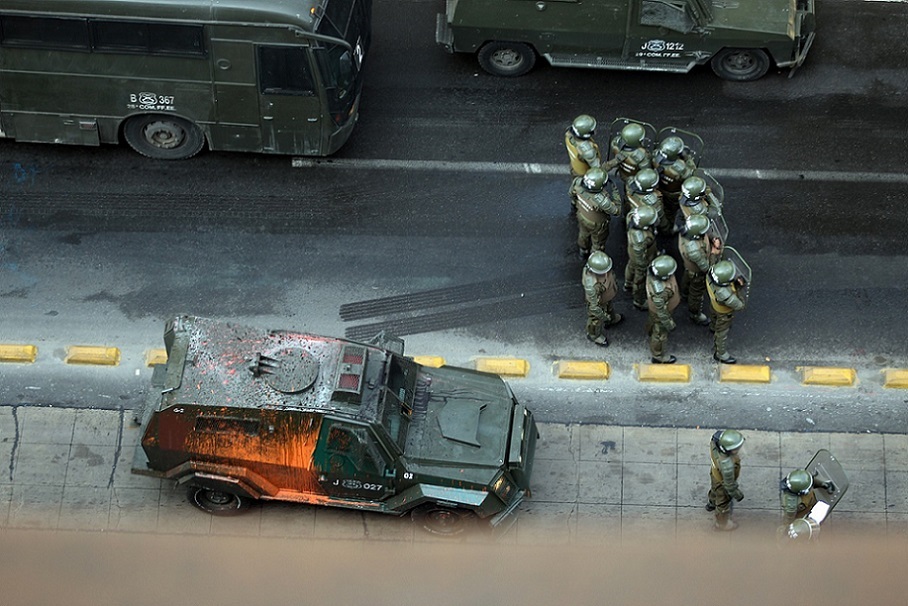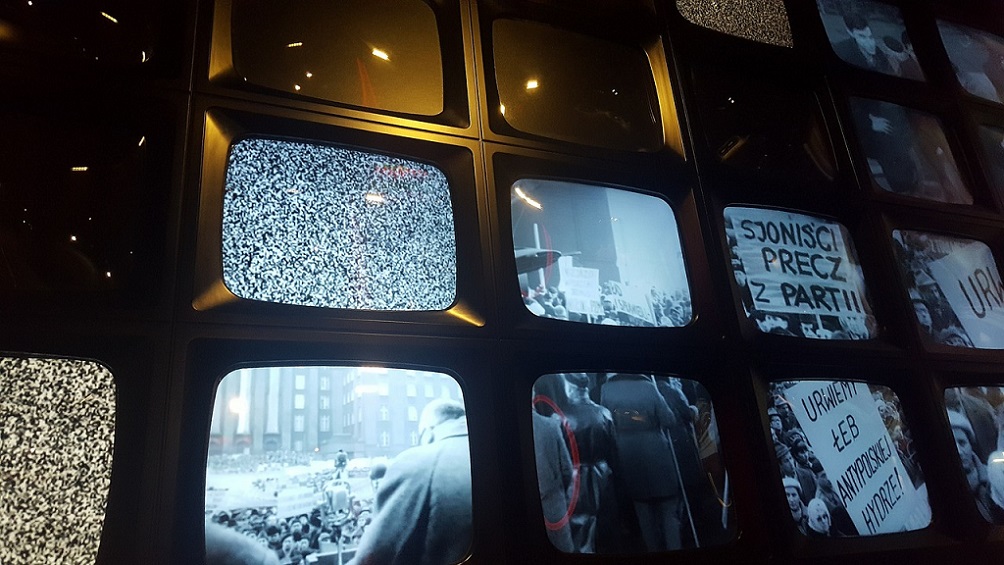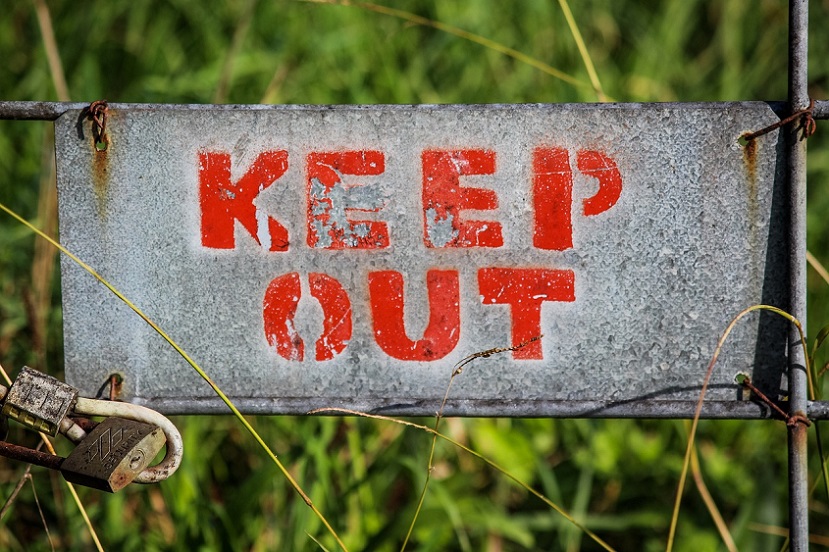In reality, it never disappeared. It is a constant threat, a risk that must not be underestimated. The far-right’s electoral victories in some European countries, Trump’s upturn in the USA and the advances of the most reactionary population in Latin America and the Caribbean are proof of its return and that we are at the gates of a new world war.

Juan Diego García
In reality, fascism never disappeared although the commitment to certain capital-labour pacts on the Old Continent (and, very partially, in the United States) created a climate of relative social peace.
The said peace (deteriorated very acutely by the neoliberal model) has occurred in the metropolises but in poor countries it has only really existed exceptionally in certain circumstances. Totally the opposite, the social order has always been characterised by open and bloody dictatorships with similar features to European fascism and which on many occasions have exceeded its cruellest and most inhuman aspects.
Fascism is not restricted to Hitler, Mussolini and the government of Japan. In the advanced capitalist world of the time, forms of fascism also appeared in the allied countries (the United States and Europe) and its ideas and social practices were similar to those of the fascism of the Axis: theories about the “superior race”, xenophobia and other similar forms of discrimination against ethnic minorities.
It involved theories similar to that of “living space” to justify aggression against other countries and in general broad limitations or even the cancellation of the bourgeois social order’s liberal principles and its replacement with forms of extreme dictatorship.
After the end of the Second World War, in France they wanted to forget their commitment to or sympathy for the Nazi occupiers and their local henchmen and many people appeared later as “active supporters of the Resistance”.
In the United States the preference was to turn a blind eye to traditional racism, diminishing the role that large social bases had and have there, along with the open sympathy with fascism of such eminent people as the industrialist Henry Ford, who wrote books defending the Third Reich. The candidate to ascend to the throne in the United Kingdom was diverted from such a pretention due to his close links with Hitler. His marriage to a divorced woman was just an excuse not to have to publicly admit that the royal household itself had a Nazi at its heart.
 Going a little further, it is obvious that the allied powers only intervened against Germany when Berlin was not satisfied with the many concessions the Allies, all of them, including the United States, had made to Hitler. They only made their minds up to really attack Germany when it lost the Battle of Stalingrad. Apparently, the Allies were waiting for the Nazis to defeat the USSR before then looking for some way to put an end to the “communist danger” and they only really made up their minds to fight the Nazis when that battle signified Berlin’s final defeat. Neither the Germans, Italians or Japanese were the incarnation of “evil” (as the propaganda made out), nor did the Allies turn out to be the full incarnation of civilised values.
Going a little further, it is obvious that the allied powers only intervened against Germany when Berlin was not satisfied with the many concessions the Allies, all of them, including the United States, had made to Hitler. They only made their minds up to really attack Germany when it lost the Battle of Stalingrad. Apparently, the Allies were waiting for the Nazis to defeat the USSR before then looking for some way to put an end to the “communist danger” and they only really made up their minds to fight the Nazis when that battle signified Berlin’s final defeat. Neither the Germans, Italians or Japanese were the incarnation of “evil” (as the propaganda made out), nor did the Allies turn out to be the full incarnation of civilised values.
In the Axis countries there were social and political forces that fascism subjected to extermination and which expressed opposition to the regime: socialists, communists, Christians (the protestants more than the Catholics, whose Pope at the time refused to condemn Hitler’s crimes) as well as bourgeois democrats and even monarchists who were clear-sighted enough to see the risk posed to civilisation by fascist principles.
Perhaps a different vision to the official version on fascism can help with understanding the “rebirth” of a fascism that really never disappeared nor was a phenomenon exclusive to the Axis countries. There were never two fascisms the same but they are identical in their complete denial of the bourgeois social order’s democratic principles, the voiding of the classic liberal ideology when the system enters a deep crisis.
 Seen from this perspective, it should not then be surprising to find a phenomenon such as Trump whose slogans cannot hide his neo-Nazi leanings since his proposals are equally contrary to any humanitarian and civilised principle, such as occurs in how immigration is treated, something he shares with the democrats.
Seen from this perspective, it should not then be surprising to find a phenomenon such as Trump whose slogans cannot hide his neo-Nazi leanings since his proposals are equally contrary to any humanitarian and civilised principle, such as occurs in how immigration is treated, something he shares with the democrats.
Nor should it be any surprise that the forces of new fascism have right now a significant electoral representation which has allowed them to form far-right governments in Italy and in northern European countries, traditionally examples of consolidated democracies. These forces of new fascism are also notable in Austria and Spain while some formally democratic leaders, who do not declare themselves to be of the far-right, carry out measures which are similar to or the same as those proposed by new fascism, as is happening in France, Germany and the United Kingdom, not to mention the regimes of Eastern Europe (Ukraine, for a start) who have at their heart political forces which are openly right-wing or declared Nazis.
In this region fascism follows very similar social processes, only that here it has been habitual practice throughout history and democracy has just appeared at exceptional moments.
This is in addition to the unlimited backing of the traditional metropolises of the West and the practice of pure and harsh violence against social and political opposition. The Creole right was and continues to be a threat to progressive governments which are now in the majority in the region.
 It is no coincidence that nobody talks about the rebirth of a fascism that has always controlled the daily life of peoples. Nor should it be a surprise if in Europe and the United States the grande bourgeoisie, faced with the certain threat of a major crisis, decides to cancel the democratic functioning of its system and favour harsher forms of domination to ensure its hegemony in the social order. The so-called “new fascism” is not the same as the traditional one, but its broad lines are there, as a risk that must not be forgotten.
It is no coincidence that nobody talks about the rebirth of a fascism that has always controlled the daily life of peoples. Nor should it be a surprise if in Europe and the United States the grande bourgeoisie, faced with the certain threat of a major crisis, decides to cancel the democratic functioning of its system and favour harsher forms of domination to ensure its hegemony in the social order. The so-called “new fascism” is not the same as the traditional one, but its broad lines are there, as a risk that must not be forgotten.
(*All opinions are the author’s.)
(Translated by Philip Walker) – Photos: Pixabay












.jpg)












